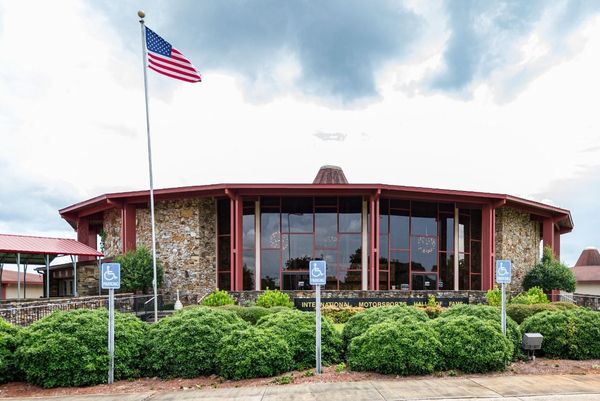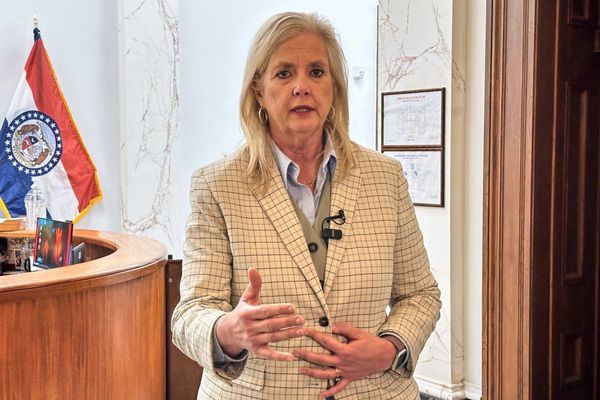
The water level in Oregon’s remote, salty Lake Abert fell to unusually low levels in July 2013. As it did, the salt concentrations became too high even for the few species adapted to its saline waters. Tiny brine shrimp and alkali flies died en masse. By September, so much water had been lost that the salts precipitated into a shimmering white crust of triangular crystals.
Daily counts of shorebirds had reached 350,000 in July – a higher density than is found even at the Great Salt Lake – but after the lake dried out and remained empty the following summer, bird counts dropped by 90%.
In 2014, 2015, 2021 and 2022, the lake remained largely dry, with bird numbers decimated. Last winter, an unusually wet season replenished some of the lake’s water but scientists warn that the overall trend is still one of decline and the factors that dried up the lake remain.
Most people have never heard of Lake Abert, but it is a critical stopping point for migratory birds that have evolved to live on inland saline waters. In the past decade, however, it dried up five times, provoking recriminations between conservationists and local ranchers, who use water from the lake’s tributaries to irrigate their land.
Finally, in 2022, the two groups decided to work together, following in the footsteps of the numerous collaborative conservation groups that have helped diverse stakeholders around the rural American west to find common ground on topics such as fire and species conservation.
Now, the partnership faces a new stress test: the reality that in the climate-changed American west, there simply is not enough water to go around.
Terminal or sink lakes such as Abert form at the lowest point of closed basins, which have no surface outlet. In the American west, there are only a few large and permanent terminal lakes, including Abert, the Great Salt Lake, Mono Lake and the Salton Sea.
These closed-basin water systems are unusual because “you just get that one shot of water – what you see is what you have”, says Colleen Withers, a seventh-generation rancher in the basin.
Most of the water flowing into Abert comes via the Chewaucan River. As it carries snowmelt across the valley’s steppe in the spring, ranchers divert the river into canals and flood grassy marshes where their cattle live during the winter and give birth to their young in the spring.
Those irrigation systems date back to the early 1900s, but the diversions have increased over time. If all the water extraction rights on the Chewaucan were fully used now, they would exceed the river’s flow. Climate change has also increased evaporation from the river and the lake.
That is worrisome for conservationists and scientists because of its implications for shorebirds such as Wilson’s phalaropes and American avocets that have adapted over time to live around saline lakes, learning to feed in ways that minimise their salt intake and evolving specialised glands above their eyes to excrete salts.
They are attracted to salt lakes for the abundant invertebrates – since there are no fish or other birds to eat the flies and shrimp, they are abundant and “just dead easy to eat”, in the words of Theo Dreher, president of the Oregon Lakes Association. While they are at Abert, the birds moult and double their body weight before their arduous flight south – all the way to Argentina, in the phalaropes’ case.
When such lakes lose water and their salinity increases, however, the invertebrates cannot survive and there is not enough food for the birds’ needs. They are so highly specialised that they can live nowhere else, and since about 10% of those shorebirds’ entire populations pass through Abert, the lake’s decline could have a drastic effect on the species.
“They’re on a razor’s edge in terms of their physiological abilities to survive – they are so dependent on these shallow saline lakes,” says Ron Larson, a retired scientist and member of the Oregon Lakes Association.
“We don’t want to get into a situation where the populations get so low that they can’t recover.”
***
Ranchers and landowners have formed the Chewaucan Watershed Collaborative, so that they, too, can participate in the debate about the lake’s decline. The ranchers emphasise the need to consider Abert’s watershed as a whole.
For instance, swathes of the Fremont-Winema national forest, through which the Chewaucan River flows, burned in a 2021 fire, due to long-term drought conditions. “Abert is at the end of the system, and the whole system is impacted,” says Tess Baker, a fourth-generation rancher in the basin.
Baker, Withers, Dreher and their spouses met in May 2022 to discuss collaborating. “We found right from those early meetings that it was easy to talk,” says Dreher.
They asked for support from Oregon Consensus, an institution that sponsors complex conflict resolution, and spent the summer bringing together environmental groups, government agencies and local tribes to form the Partnership for Lake Abert and the Chewaucan.
After the members of the group identified their points of disagreement, they realised that they lacked a sufficient body of facts, so they commissioned six months of research collecting scientific data, traditional tribal ecological knowledge, and ranchers’ experiences.
One of the main differences relates to the ranchers’ water diversions. Ranchers argue that their flood irrigation mimics the way the marshes functioned before the land was settled and drained in the late 1800s.
They say the marshes harbour an immense biodiversity of grasses – upwards of 50 species – and attract birds such as sandhill cranes, geese and black-necked stilts. “There’s a symbiotic relationship between wildlife and ranching,” says Keith Baker, Tess’s husband.
Conservation organisations and the Oregon state department of fish and wildlife supported the development of that flood irrigation in the 1980s. But Dreher disputes the claim that the practice mimics the marshes’ natural hydrology, and says such water use should be reconsidered now that the effects of the increasing heat and water shortage in the west have become more visible.
“At the time, it seemed like there was enough water to go around for the lake and for this sort of irrigation,” he says. “And the thing is, that’s just no longer the case.”
Other conservationists and scientists agree that Abert’s unique ecological function should be prioritised over marshland ecosystems that can be found elsewhere. “All the birds are important, and they all have their needs,” says Ryan Carle, science director of Oikonos Ecosystem Knowledge.
But for certain shorebirds, he says, Lake Abert is “the only habitat providing what they need. Whereas if you’re flood-irrigating habitat in the basin for ducks, it’s important, but there are other habitats that ducks use too.”
Wilson Wewa, of the Warm Springs Paiute Tribe, believes it is the responsibility of ranchers to use less water. “The water is finite and its overuse is spelling the doom of [Abert],” he says. “The land has a voice too, and the lakes too, and nobody’s listening to them.”
Elsewhere, two main solutions have been used to conserve lakes. In California, lawsuits invoking the public trust doctrine – which stipulates that states have a responsibility to protect bodies of water within their borders in the interests of the community – mandated a minimum water level for Mono Lake. In September 2023, environmental groups in Utah announced a similar lawsuit for the Great Salt Lake.
Another option is setting minimum flow requirements, which would require a specified amount of the Chewaucan’s flow to reach Abert.
For now, the partnership members say they do not have a specific goal, but are hoping that a solution emerges from the collaborative process. “We want water in Abert,” says Keith Baker, “because it means the whole system is satisfied.”







